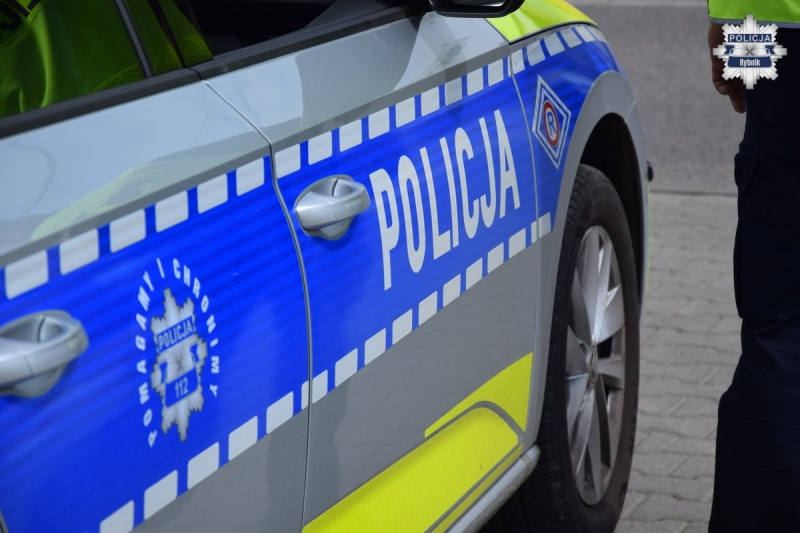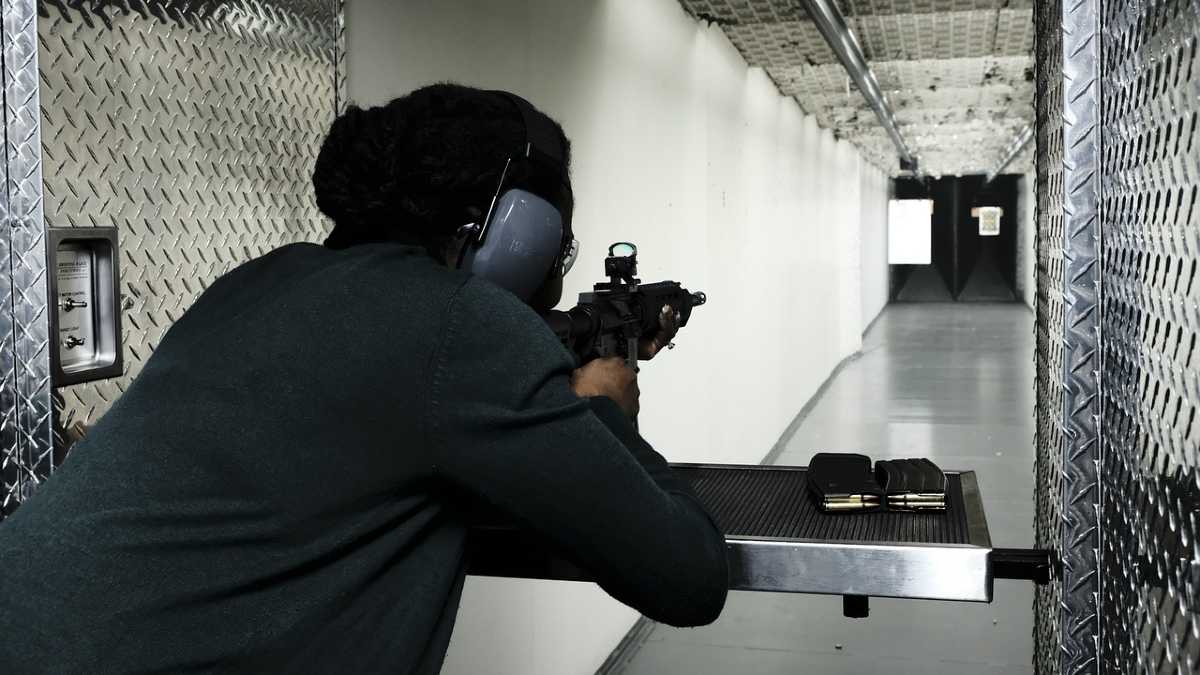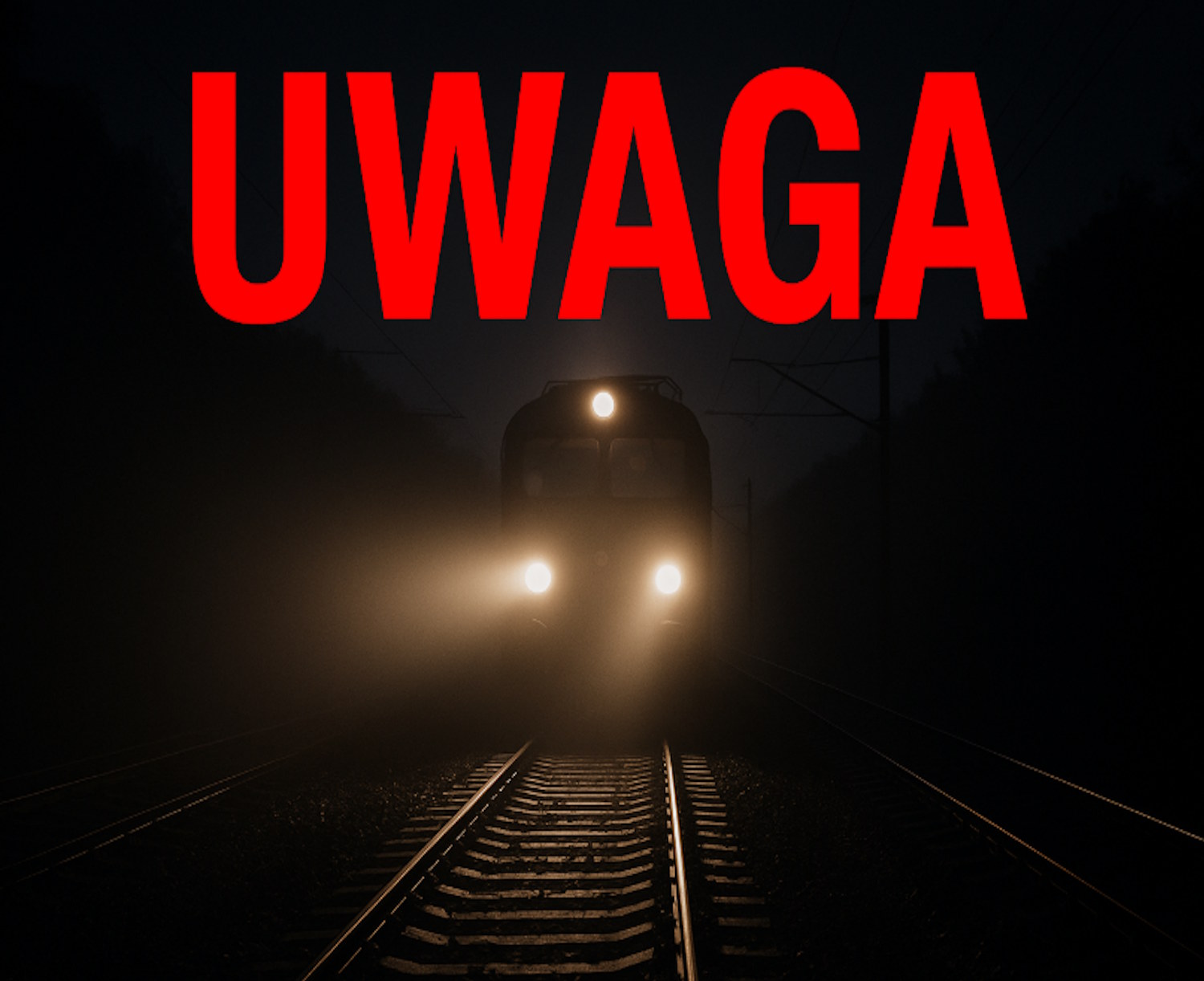
SYDNEY- On May 26, 1971, Peter Macari executed one of Australia’s most brazen extortion schemes, holding 128 passengers and crew hostage aboard Qantas (QF) Flight 755 while demanding half a million dollars.
Operating under the alias “Mr. Brown,” Macari transformed air travel into a nightmare that would forever change aviation security protocols.
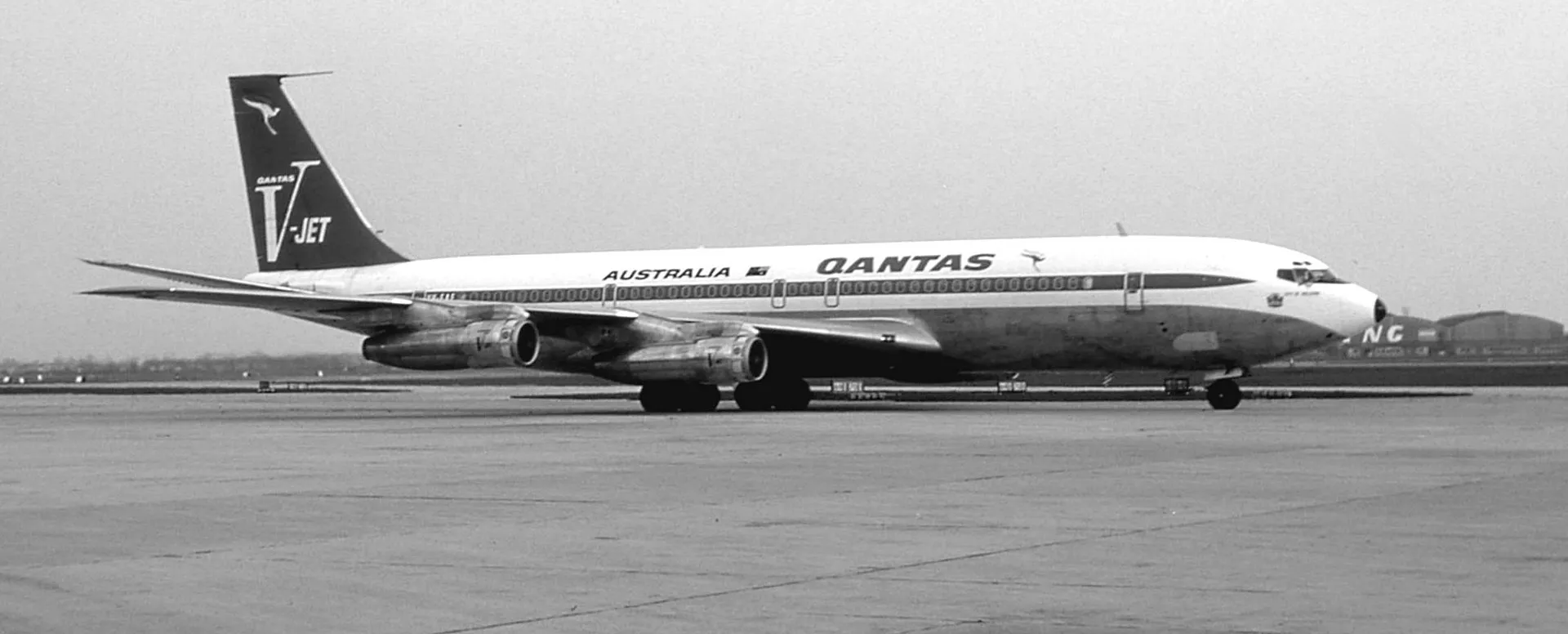 Qantas Boeing 707; Photo- Wikipedia
Qantas Boeing 707; Photo- WikipediaQantas 1971 Bomb Hoax
The plot’s genesis emerged in March 1971 when Macari watched “The Doomsday Flight,” a 1966 television thriller depicting a bomb with an altitude-sensitive switch hidden inside an airliner.
Witnesses in Townsville reported Macari declaring after the film, “That would be a good way to make money.” This fictional scenario would soon become a terrifying reality.
Macari travelled to Mount Isa in April 1971, where he befriended miner Francis Sorohan, who stole gelignite and 12 detonators for the plan. On May 11, Macari purchased an altimeter to determine aircraft altitude.
He recruited a man named “Poynting”, who typed 3 threatening letters detailing ransom instructions and warnings that the bomb would explode if the aircraft descended below 20,000 feet.
The night before the hoax, on May 25, Poynting drove Macari to a Hertz depot in Alexandria, where they stole keys to a yellow Volkswagen Kombi that would serve as their getaway vehicle.
Macari originally planned to target a Pan American jet but discovered that Flight 755 from Sydney (SYD) to Hong Kong (HKG) provided the optimal flight duration for his scheme.
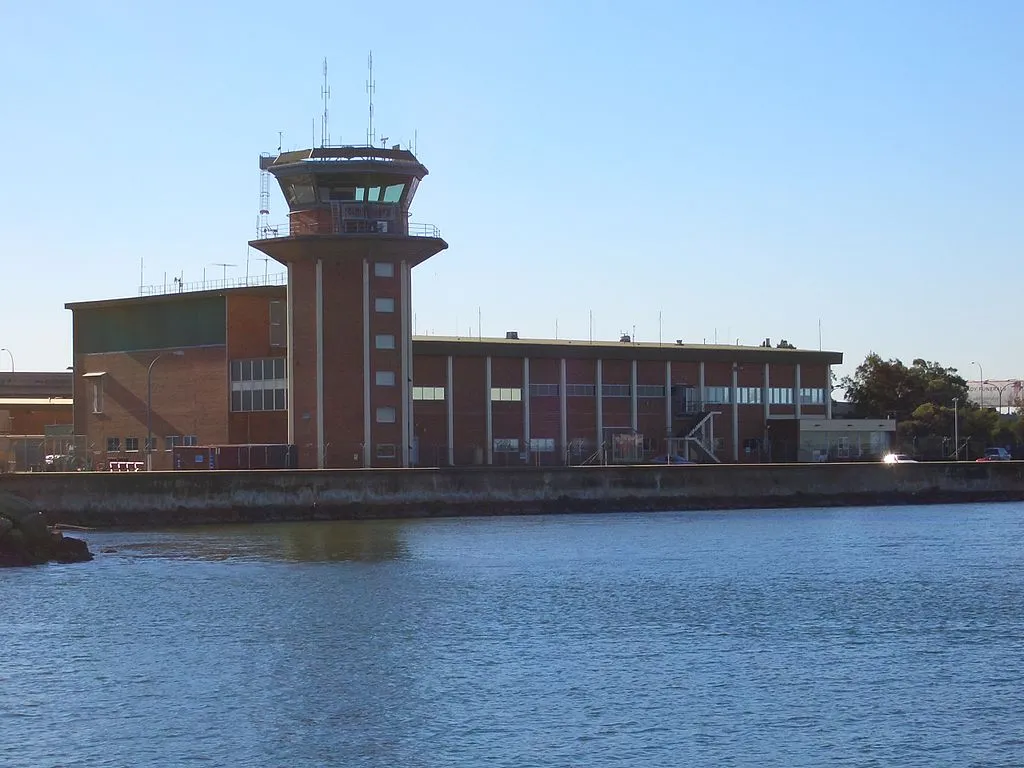 Control tower No. 4, in operation between 1972 and 1996; Photo- Wikipedia
Control tower No. 4, in operation between 1972 and 1996; Photo- WikipediaThreat Unfolds
At midday on May 26, 1971, Macari contacted the Australian Department of Civil Aviation, claiming he had hidden a bomb aboard Qantas (QF) Flight 755’s Boeing 707.
To establish credibility, he directed authorities to locker 84 at Kingsford Smith International Airport (SYD), where police discovered three letters and an explosive device constructed from unprimed gelignite and an altimeter.
The first letter demanded $500,000 for bomb disarmament instructions. The second confirmed an identical device aboard Flight 755, while the third warned of detonation below 20,000 feet.
Police defused the replica bomb, replacing explosives with a light bulb, then tested the device aboard a second Boeing 707. When the test aircraft reached 5,000 feet during descent, the light bulb activated, confirming the bomb’s lethal potential.
 Qantas Flight 755 Made-up Bomb; Photo- Attribution 9
Qantas Flight 755 Made-up Bomb; Photo- Attribution 9Flight 755 Under Siege
Qantas Flight 755 carried 116 passengers and 12 crew members when Captain William Selwyn received notification of the threat at 1:30 p.m. while flying over Dalby, Queensland.
Authorities ordered Selwyn to maintain 35,000 feet. Initially diverted to Brisbane, the aircraft circled the city at 6 miles, escorted by an RAAF Phantom fighter-bomber jet.
The plane was subsequently redirected to Sydney (SYD) due to superior emergency services. While Selwyn maintained minimum speed, crew members conducted extensive searches, examining passengers’ belongings under the pretence of seeking “a small object.”
Selwyn later recalled how crew members removed panels, ripped carpets, and dismantled light fixtures while passengers remained remarkably calm.
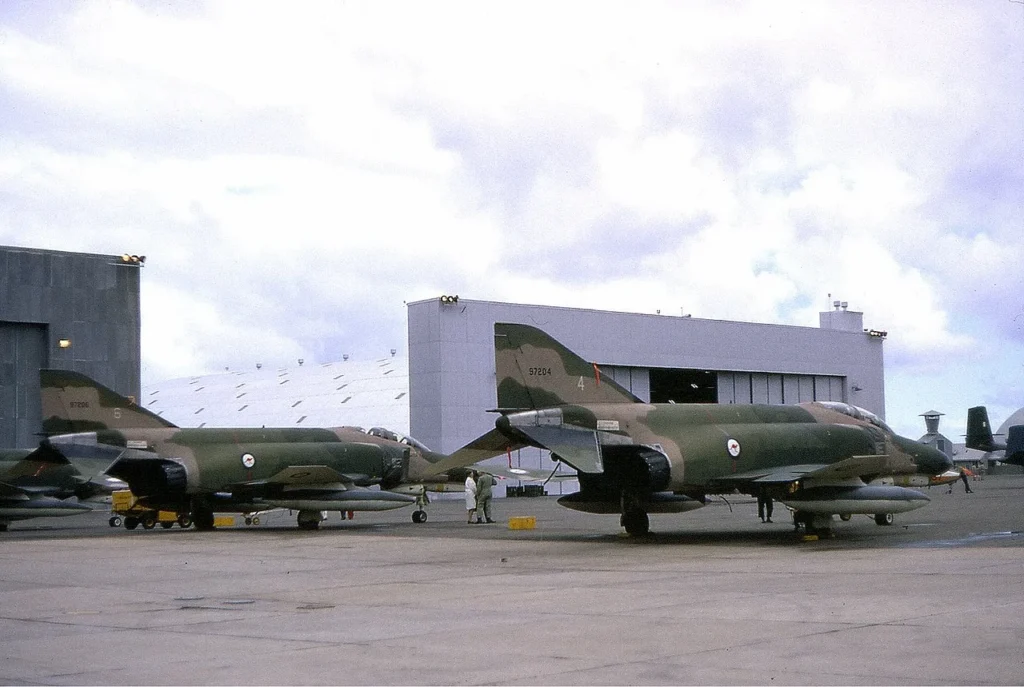 Two of the RAAF’s F-4E Phantoms at RAAF Base Edinburgh in 1971; Photo- Wikipedia
Two of the RAAF’s F-4E Phantoms at RAAF Base Edinburgh in 1971; Photo- WikipediaNegotiations
As Flight 755 circled at sea off Mascot, Macari negotiated with Qantas (QF) deputy general manager Phillip Howson throughout the afternoon.
With fuel supplies dwindling and landing required by 7:00 p.m., Qantas (QF) faced an impossible choice. Macari demanded $500,000 in used, unmarked $20 notes delivered to Chifley Square outside Qantas headquarters.
At 5:45 p.m., Macari arrived in the stolen yellow Volkswagen Kombi, disguised with a wig, fake moustache, and glasses. He instructed that a yellow van would park outside Qantas headquarters, with the driver identifying himself by shaking keys from the window.
Captain R.J. Ritchie handed two blue suitcases containing the ransom through the van’s window. Despite 4 police vehicles in the area, they were never informed of the handover’s timing.
Shortly after 6:00 p.m., authorities received Macari’s final call revealing no bomb existed aboard Flight 755. The aircraft began descent around 6:40 p.m., landing safely at Sydney Airport (SYD) after more than 6 hours of terror. Macari had successfully executed one of aviation history’s most audacious hoaxes!
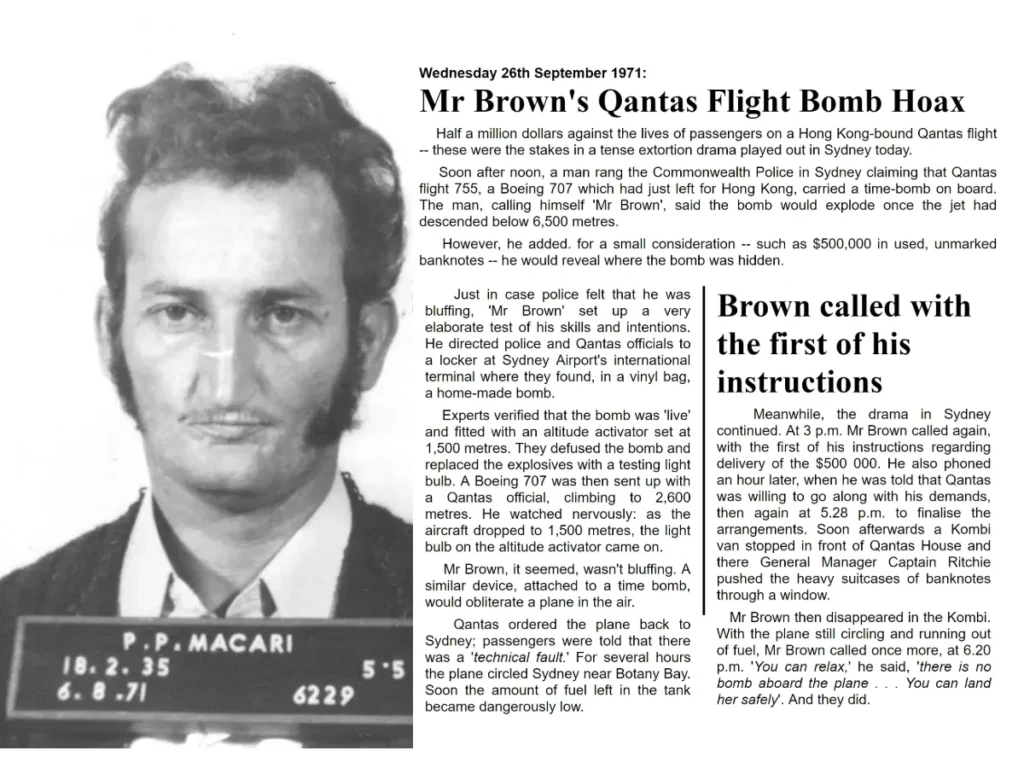 Peter Macari Behind Qantas Flight 755 Extortion; Photo- Attribution 9; Compiled by Aviation A2Z
Peter Macari Behind Qantas Flight 755 Extortion; Photo- Attribution 9; Compiled by Aviation A2ZThe Investigation Intensifies
Police offered a $50,000 reward on May 27, generating over 14,500 public calls. Phonetic experts analysed voice recordings, determining the perpetrator was an Englishman from the Midlands, likely a recent migrant. Authorities collaborated with Scotland Yard, Interpol, and the FBI to narrow suspect lists.
Two weeks later, police traced the gelignite and detonators to Mount Isa Mines in Queensland, initially believing “Mr. Brown” worked in mining. The breakthrough came in August 1971 when a service station attendant reported Raymond Poynting’s sudden extravagant purchases, including an E-Type Jaguar and a Ford Falcon GT.
Justice Served
Police arrested Macari on Burton and Elizabeth Street in Darlinghurst on August 4, 1971, followed by Poynting’s arrest at his Bondi Junction apartment. Poynting immediately confessed his involvement.
Authorities recovered $138,240 behind a bricked-up fireplace in an Annandale property, with another $137,000 discovered in a Balmain home in July 1973.
Macari claimed a mysterious accomplice named “Ken” had masterminded the scheme and taken the remaining money, but police dismissed this explanation due to a lack of evidence. Only $260,000 of the $500,000 ransom was ever recovered.
 A newspaper clipping from 1971 describes the hoax and pay-off. (Supplied: News Obscure); Edited by Aviation A2Z
A newspaper clipping from 1971 describes the hoax and pay-off. (Supplied: News Obscure); Edited by Aviation A2ZLegal Consequences
Both men pleaded guilty to demanding money with menaces and stealing a motor vehicle. In January 1972, Macari received 15 years imprisonment, eligible for parole after nine years, while Poynting received 7 years.
Macari served 9 years before being paroled and deported to England on a Qantas (QF) flight in 1980. He reportedly operated a fish and chip shop purchased by his brothers until his death by suicide in 2013.
Stay tuned with us. Further, follow us on social media for the latest updates.
Join us on Telegram Group for the Latest Aviation Updates. Subsequently, follow us on Google News
Today In Aviation: Aeroflot Flight 593 Crashed by Children of A Pilot
The post Qantas Sydney to Hong Kong Flight Gets Bomb Hoax Call | Today in Aviation appeared first on Aviation A2Z.

 5 miesięcy temu
5 miesięcy temu
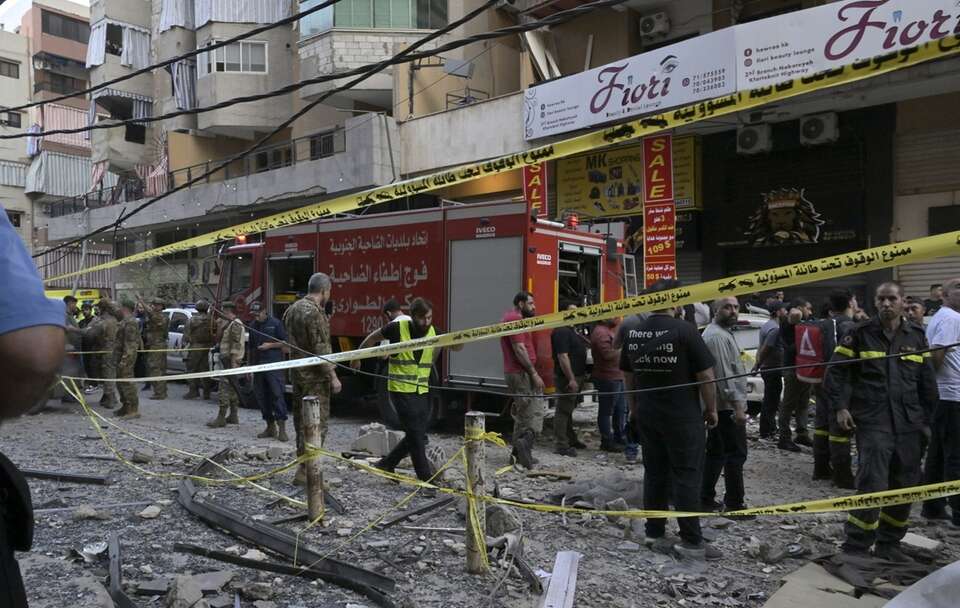



![Ślubowanie kadetów i nowa strzelnica w Zespole Szkół numer 5 w Rybniku [FOTO]](https://www.naszrybnik.com/photos/176393477557-908806-.jpg)


